Heilongjiang, often referred to as “Heilong” for short, lies in the far northeast of China and borders Russia. It’s the coldest province in the country, with winters that shape its identity. The capital, Harbin, is known as the “Moscow of the East” for its stunning Russian-style architecture and strong cultural influence. Other major cities like Mudanjiang, Qiqihar, and Daqing each offer their own unique character.
The province is mainly flat or hilly, with the Songhua River running through it. Heilongjiang boasts vast forests and is one of China’s major ecological zones. It’s famous for both its snowy winters and cool, green summers—perfect for travelers looking to experience dramatic seasonal contrast.
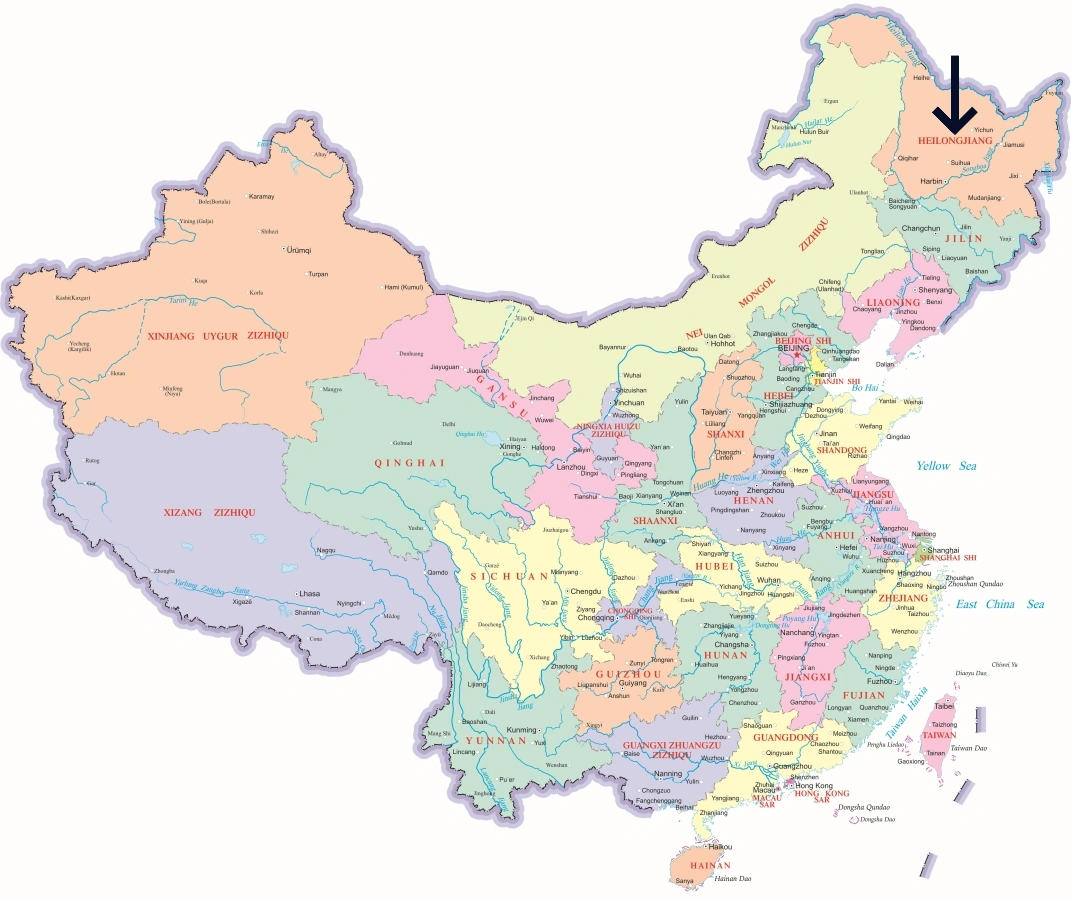
Heilongjiang has 12 major cities, and each one adds something special to your trip. From frozen landscapes and volcano lakes to Russian relics and bird sanctuaries, you’ll find a wide range of travel experiences here.
While Harbin, Mudanjiang, Qiqihar, and Daqing are the most visited destinations, cities like Jiamusi, Heihe, Yichun, Jixi, Hegang, Shuangyashan, Qitaihe, and Suihua are also worth exploring.
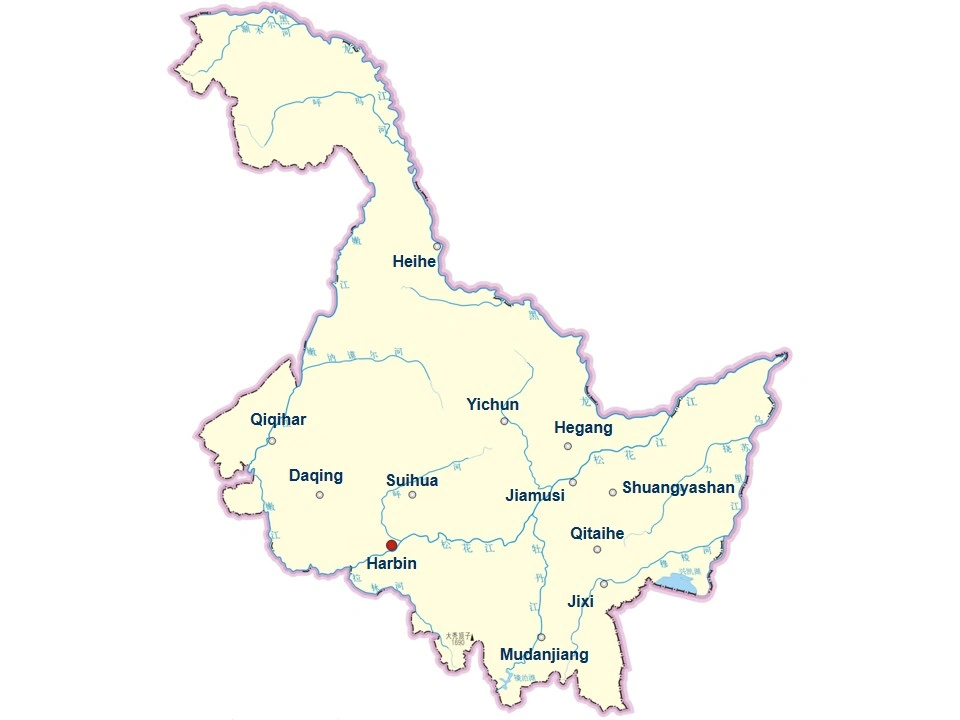
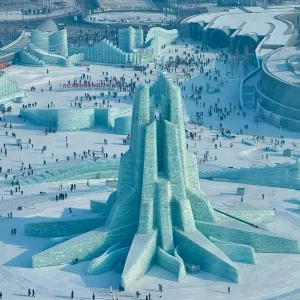
The provincial capital. It’s famous for the annual Ice and Snow Festival and Saint Sophia Cathedral. Harbin fuses Russian elegance with Chinese modernity.
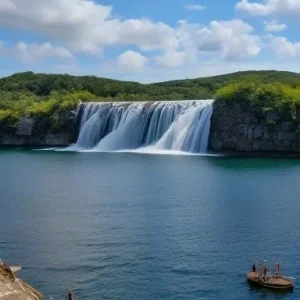
A scenic getaway near Jingpo Lake and Changbai Mountain. The famous lava waterfall here is a breathtaking summer retreat.
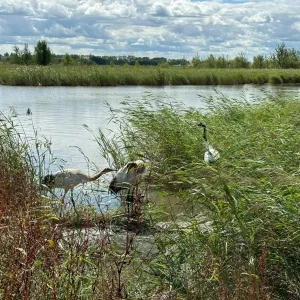
Known for the Zhalong Nature Reserve, home to rare red-crowned cranes. A historic city shaped by the Nenjiang River.
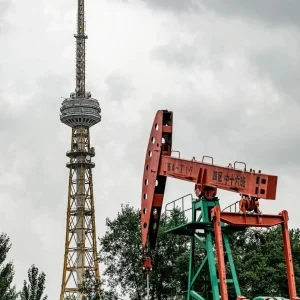
The heart of China’s oil industry. Visit the Iron Man Wang Jinxi Memorial and learn about the city's industrial roots.
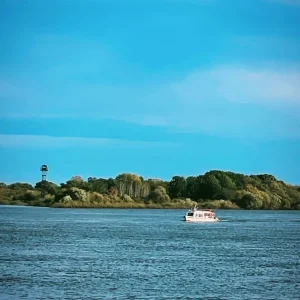
Located in the eastern plains, it’s a commercial hub close to the Ussuri River and Fuyuan border region.
Heilongjiang offers breathtaking winter magic and pristine nature. Whether you’re chasing frozen castles or soaking in forested landscapes, the region delivers year-round appeal.
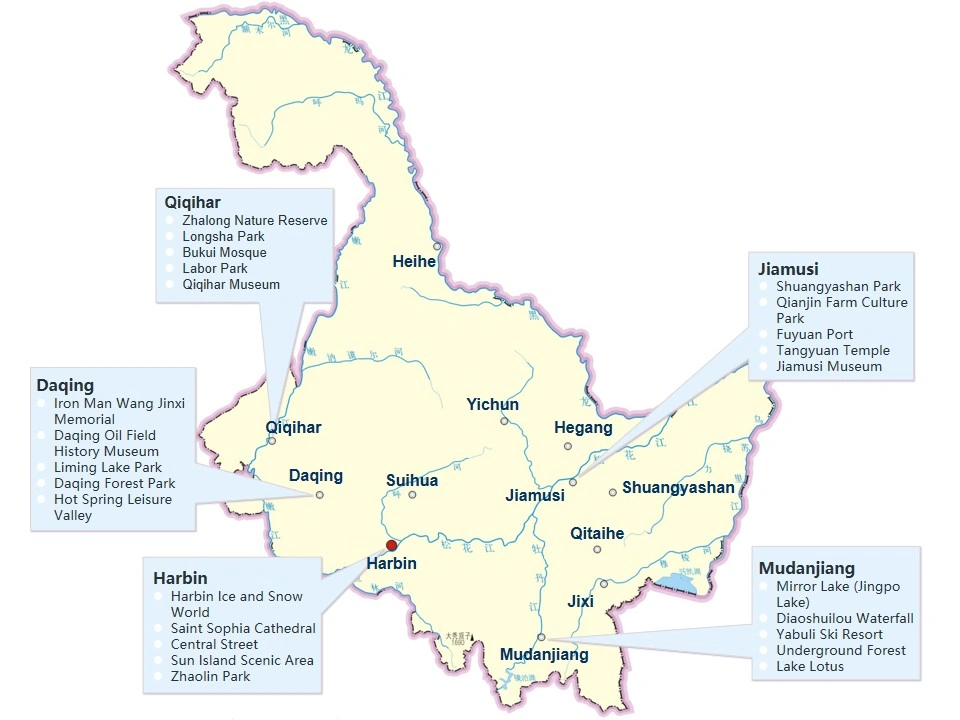
-300x300.webp)
One of the world’s largest ice sculpture parks. Built entirely with Songhua River ice, it's a winter wonderland of castles, slides, and glowing lights.
-300x300.webp)
A Russian Orthodox cathedral with a distinctive red-brick dome. A striking symbol of East-meets-West.
-300x300.webp)
Formed by volcanic eruptions, this serene lake is perfect for boating in summer and ice-watching in winter.
-300x300.webp)
China’s premier birdwatching site, especially for spotting red-crowned cranes. A must-visit for wildlife photographers and families.
-300x300.webp)
An active volcanic landscape with black lava fields and mineral springs. A UNESCO Global Geopark with otherworldly charm.
-300x300.webp)
A Russian-style resort on the banks of the Songhua River. Perfect for a romantic stroll, family fun, or cultural immersion.
The food in Heilongjiang belongs to the Dongbei (Northeast China) tradition. Expect bold, salty flavors and hearty portions. Dishes often feature braising, stewing, or pan-frying and reflect a blend of Han Chinese, Manchu, Russian, and Korean influences.
Winter is the best time to enjoy traditional meals like hot pots and “pig-killing dishes.” In summer, cool noodles and grilled meats rule the menu.
-300x300.webp)
Crispy on the outside, tender inside. This dish is a local favorite with a tangy glaze.
-300x300.webp)
A seasonal winter banquet made with pork, sauerkraut, and blood sausage. It’s a rich tradition of warmth and community.
-300x300.webp)
A crusty loaf with a chewy center. Best enjoyed with butter or smoked sausage.
-300x300.webp)
Fresh carp or bighead fish stewed with tofu and noodles. A rustic dish often served outdoors in iron cauldrons.
-300x300.webp)
Meaty, fall-off-the-bone pork simmered in dark soy and garlic. A street-food favorite.
-300x300.webp)
Natural “ice desserts” that taste surprisingly refreshing. Popular winter snacks straight from the freezer.
Heilongjiang covers about 473,000 square kilometers and is home to roughly 31 million people. Below are the details by city:
Heilongjiang experiences a cold continental climate with long winters and short, mild summers. Here’s a month-by-month guide:
Best months to visit? December–February for snow, and June–August for forests and cool air.
Below are the main postal and area codes by city:
